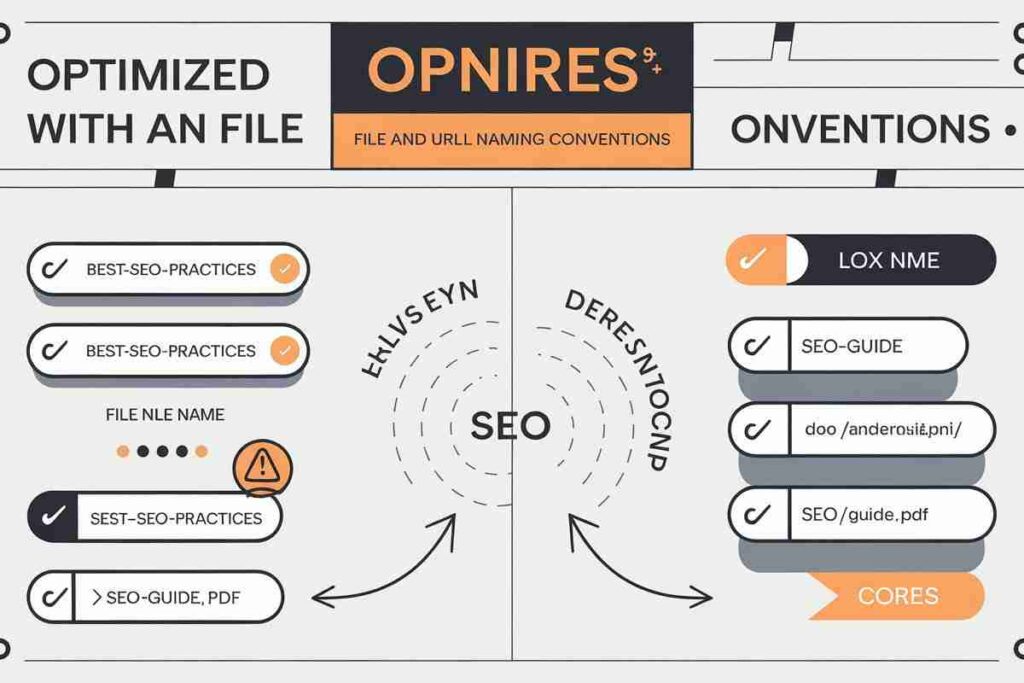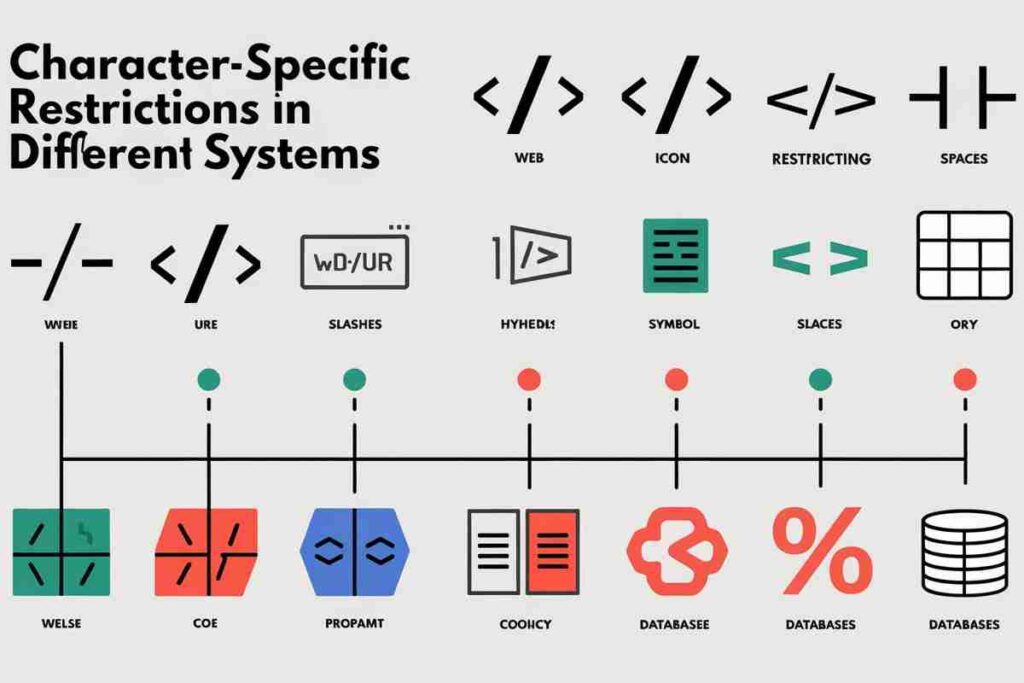When it comes to optimizing your website for SEO, selecting the right characters for URLs, filenames, and PDFs is critical for better rankings and user experience.
The characters you choose directly impact how search engines index your content, how users navigate your site, and the overall user experience.
This guide provides actionable advice on what characters to use and avoid, ensuring your content ranks higher, remains user-friendly, and avoids technical errors.
Read on to discover essential tips for crafting SEO-friendly URLs and filenames that boost your site’s visibility and performance.
What Characters to Use Not Use SEO

When optimizing your website for SEO, it’s essential to understand what characters to use not use SEO to avoid issues with search engine indexing, improve readability, and enhance overall user experience.
Using alphanumeric characters and hyphens is ideal for readability and better search rankings. Special characters like &, %, and spaces should be avoided, as they can create technical problems and negatively impact your SEO performance.
By following these guidelines, you can enhance your site’s visibility and ensure it is indexed correctly by search engines.
Why Special Characters Matter in SEO
The characters used in URLs and filenames play an important role in SEO because search engines interpret them differently, affecting search rankings, indexing, and overall site visibility.
For instance, characters like &, ?, or % can complicate indexing, while spaces in URLs are converted into %20, making them look cluttered.
Knowing what characters to avoid in filenames, URLs, and PDFs can help improve readability, prevent technical errors, and boost SEO.
What Characters to Use in SEO (H2)
Using the right characters makes your URLs and filenames clean, readable, and easy for search engines to interpret. Here are the best characters to include:
Alphanumeric Characters (a-z, A-Z, 0-9)
Stick to letters and numbers, as these are universally recognized, and search engines can easily interpret them.
Hyphens (-)
Hyphens are recommended for separating words in URLs and filenames. Search engines prefer hyphens because they improve readability. For instance, what-characters-to-use-not-use-seo is more readable than whatcharacterstousenotuse.
Underscores (_) for Filenames
While hyphens are better for URLs, underscores can work well in filenames. Although hyphens are the gold standard for SEO, using underscores in filenames won’t harm rankings but should be avoided in URLs.
What Characters Not to Use in SEO (H2)
Certain characters can cause technical issues for search engines and browsers. These characters should be avoided in URLs, filenames, and metadata.
Spaces and Special Characters (&, ?, #, %, {}, ~, /, \, <, >)
Using spaces and special characters in URLs and filenames can create complications. Spaces are encoded as %20, while characters like & and # may disrupt proper indexing, leading to errors.
For example, using special characters in file names in Android can lead to inaccessible files due to system restrictions.
- Example: Instead of
what&characters?to#use%in$SEO, usewhat-characters-to-use-seo.
Periods and Multiple Dots (.)
Periods are typically used to separate file extensions (like .jpg or .pdf). Using multiple periods or dots can confuse search engines. Avoid anything beyond one period before the file extension.
- Example: Avoid
what.characters.to.use..in.seo.pdf; usewhat-characters-to-use-seo.pdfinstead.
Characters to Avoid in Filenames (H3)
Certain special characters are restricted in some operating systems, such as ?, <, >, :, ", /, \, |, and *. Using these in file names may cause errors or prevent files from opening.
Reserved Characters ({}, [], |) in URLs
Some characters are reserved for specific functions within URLs, like {} and []. Using them inappropriately may cause URLs to break or prevent search engines from properly reading the content.
Optimizing SEO with File and URL Naming Conventions (H2)

When creating SEO-friendly file names, URLs, or PDFs, follow these tips to maximize SEO benefits:
Keep URLs and Filenames Short and Descriptive
Search engines prefer concise URLs and filenames that clearly reflect the page’s content. Long, complex URLs with irrelevant words or special characters should be avoided.
Use Focus Keywords at the Beginning
Place primary keywords at the beginning of the filename or URL to help search engines identify the page’s content quickly. For example, instead of tips-for-better-seo-what-characters-to-use-not-use, try what-characters-to-use-not-use-seo-tips.
Use Lowercase Letters Only
While URLs are technically case-sensitive, lowercase letters are the standard. Mixed case URLs, such as What-Characters-To-Use, might be interpreted as different URLs, causing duplicate content issues.
SEO Best Practices for PDFs and Images (H2)
What Characters to Use & Not Use in SEO PDFs
When naming PDFs for SEO, follow the same guidelines as with URLs and filenames. Avoid characters like &, ?, %, and use hyphens to separate words.
PDFs with clean, keyword-rich titles rank better in search engines. For example, instead of What_Characters_to%Use_Not_in-SEO.pdf, use what-characters-to-use-not-use-seo.pdf.
Image Filenames: Best Practices
Images should have clear, descriptive names with hyphens between words. Avoid using underscores or special characters in image filenames.
For instance, what-characters-to-use-seo.jpg is preferable to WhatCharacters_Use.jpg.
Character-Specific Restrictions in Different Systems (H2)

Operating systems may limit certain characters, affecting file accessibility across devices:
- Windows: File names cannot include characters like
\,/,:,*,?,",<,>, or|. - Android: Special characters such as
?,&, and%can prevent files from loading correctly.
Using universally accepted characters ensures cross-platform compatibility, preventing technical issues.
External Resources for More Information (H2)
For those interested in deepening their knowledge, the following resources provide useful insights:
- Moz Guide to SEO Best Practices for URL Structures
- Google’s Recommendations for SEO-Friendly URLs
- Search Engine Journal’s Guide on Filenames and SEO
Conclusion
In summary, choosing the right characters for URLs, filenames, and PDFs is crucial for both SEO and user experience, as it helps improve search rankings, prevents errors, and enhances accessibility.
Stick to simple, readable characters like alphanumeric characters and hyphens, while avoiding special characters that can confuse search engines or cause technical issues.
By following these best practices, you’ll improve your site’s visibility, prevent errors, and enhance accessibility across devices. Keep your URLs and filenames clean, descriptive, and keyword-rich to boost your SEO efforts and ensure a smoother user experience.
FAQs
What characters to use not use SEO?
For SEO, use alphanumeric characters, hyphens, and underscores. Avoid special characters like &, %, and spaces to ensure better indexing and readability.
Why are characters important for SEO?
Characters in URLs and filenames impact search engine indexing, readability, and overall SEO performance. Using the right characters improves rankings.
Can I use spaces in URLs for SEO?
Spaces in URLs should be avoided as they are converted to “%20”, making them look cluttered. Use hyphens instead.
Are underscores good for SEO in URLs?
Underscores are not ideal for URLs as search engines treat them as a single word. Use hyphens instead.
Can we use special characters in meta titles?
Yes, but it’s best to avoid excessive special characters as they can affect readability and indexing.
What is the character limit for SEO?
For meta titles, the limit is typically around 50-60 characters to ensure full visibility in search results.
What is the minimum text length for SEO?
While there’s no strict minimum, aim for at least 300 words on a page to improve SEO performance.
What is the 255 character limit?
It refers to the maximum length for certain meta data fields, like meta descriptions, in some systems, though for SEO, it’s typically best to keep it under 160 characters.




